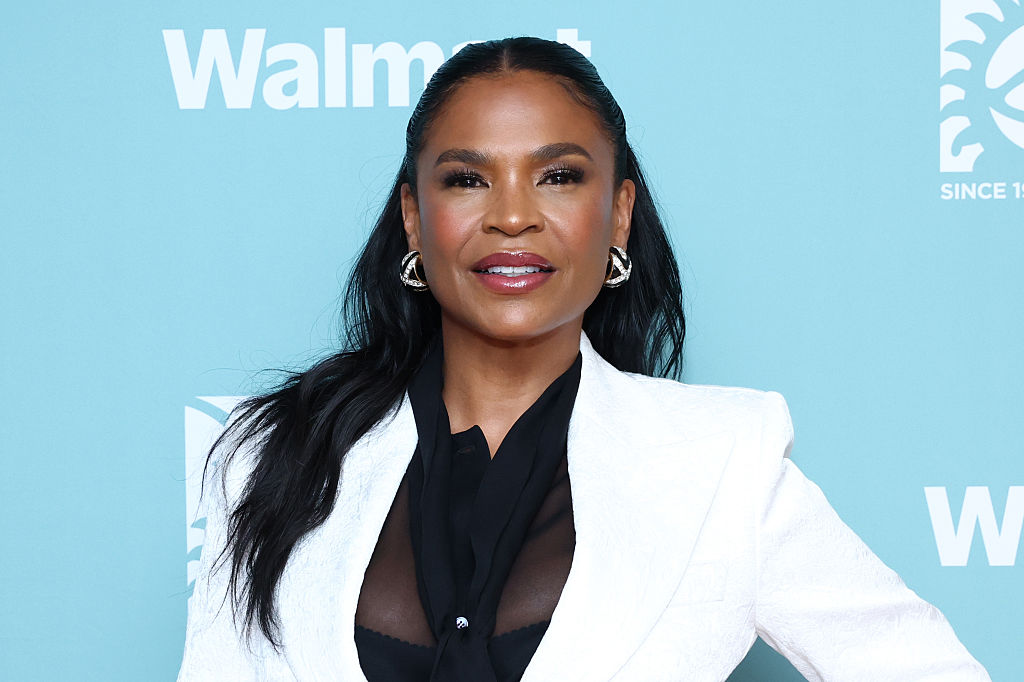Black Respectability & What's Keeping HBCUs From Moving Ahead
Dress Codes, Black Respectability & What’s Keeping HBCUs From Moving Ahead
Share the post
Share this link via
Or copy link
As a proud graduate of Virginia Union University, an HBCU, I have to admit that there are some times when these institutions really disappoint me.
The story of Melona Clark is one of those occasions. According to the Huffington Post, Clark, a student at Hampton University in Virginia, has been forced to carry papers at all times, proving she is a real Muslim – and not just some tacky handkerchief head mammy, with a penchant for colorful headscarves. From the Huffington Post:
“Clark, a student at Hampton University in Virginia, was forced by the school to obtain a letter from her chaplain and a letter from her mosque before the university would allow her to wear her headscarf on campus, local news outlet WTKR-TV reported on Friday.“If I am ever stopped and asked who I am … I want to have all the proof that I can that I am a student here,” she told the station when asked about why she carries the official papers with her everywhere she goes. “I don’t want to have to go through anything like I went through in the first place.“
The University’s stance is that unauthorized headscarves violate the school’s Dress Code: Procedures for Cultural or Religious Head Coverings Students policy, which request that students wanting to wear headscarves on campus must first seek, “approval to wear headgear as an expression of religious or cultural dress may make a written request for a review through the Office of the Chaplain.” In terms of police practice, it makes sense but the bigger question is why does a university need to regulate the dress of young adults at all – other than ensuring folks have on top and a bottom?
Clark is not the only student at Hampton University raising questions about the legitimacy of a student dress code. A couple of years ago, the dress code at Hampton University M.B.A program found itself in the national spotlight for its ban on cornrows and dreadlocks for male business students. And just a few months ago, during an orientation meeting for freshmen, Hampton female students were lectured through a power point presentation about the “Dangers of Twerking.” And by danger, HU really meant from the school itself, who was threatening stiff school penalties for anyone found twerking anywhere out in public.
Black colleges and universities, particularly the institutions located in the South, have long been notoriously known for their cultural conservativeness. During my term at Union, which lasted from 1995 through 2000, the school’s administration at the time put all sorts of, what most in the student body felt were unreasonable and invasive, restrictions on our movements and interactions on campus – including prohibiting the opposite sex in dorm rooms; dorm curfew times and non Union people at on-campus events including parties. This while our black friends and fellow college students at Virginia Commonwealth University (VCU) and other schools got to do whatever the hell they wanted. And although there were no outright restrictions on dress, it was drilled in our heads through tone and actual words what was considered fashionable for young black men and women. Therefore, Hampton’s student body is not alone in its adherence to black respectability.
In fact, in 2007 the newly appointed president of Paul Quinn College in Dallas announced that he was instituting a dress code in order to help uplift the institution,”riddled in mediocrity.” And in 2009,Morehouse College enacted its new “Appropriate Attire Policy,” which among other things, outlawed saggy pants, mouth grills, do-rags, lewd t-shirts and cross-dressing. The latter of which drew all sorts of ire from the university’s gay and lesbian student body. In fact, while most historically and predominately white colleges and universities hold no such restrictions (with the exception of religious-based colleges and universities) and students are free to discover, innovate and express themselves style-wise, it is the HBCUs, that still preach the message that conformity and obedience is the ticket to success.
Listen, as private institutions, which many HBCUs, continue to be, they are well within their rights to govern student body behavior as they so please. However I feel that the universities do themselves no favors with these archaic and often counterproductive rules. Not at a time when many HBCUs find themselves at the peril financially and are questioning if their hallow grounds will be around into the future.
Even as the long touted National Science Foundation study shows us that HBCUs are responsible for producing most of America’s black professionals, including 85 percent of all doctors, 60 percent of engineers and 80 percent of federal judges, other reports show HBCUs have been declining in its role as higher educator for the black student from its height of 90 percent during the era of the Civil Rights Movement to now only 13 percent. With integration came access to more historically and predominately white institutions – and not just the Ivy Leagues. This article in Diverse Education, says that HBCUs have lost many Black students who have increased admission rates to traditional institutions by approximately 14 percent.
According to this story in Roland Martin Reports, the declining enrollments at many HBCUs, which ultimately means fewer opportunities for endowments (Black colleges, on average, have endowments of $15.8 million, which is only about one-eighth the average of traditional institutions), has also meant some lean financial times for many of our beloved institutions including Grambling University, Fisk University, Howard University, Morehouse College, and even my alma mater Virginia Union University. These tough economic times for black institutions has meant a loss of accreditation and Chapter 11 bankruptcy for Morris Brown College in Atlanta and a complete closure of St. Paul’s College in Virginia. Although President Barack Obama has awarded $228 million in grants to assist some 97 HBCUs, the Administration has also tightened terms with with the Parent Plus loan (this in addition to the Education Department, which recently dropped the maximum income eligibility for Pell Grants to just $28,000), which has inadvertently left thousands of low-income and credit-impaired parents ineligible. These factors have also hit HBCUs with another decline in income and a further plunge in enrollment.
All of this fiscal data is to say that when so many black institutions find themselves at a crossroads financially, and potential black students are weighing culturally hostile environments against the financial burden of higher education, it doesn’t make much sense for many of these institutions to continue to cling to the practices of policing arbitrary behaviors like someone’s style of dress. All of this makes HBCUs the suit-wearing stiff while the rest of the world’s institutions have moved on to casual Fridays. And why would a transgendered or black Muslim or just a young dude who likes to sag his pants while he studies for his Physiology 101 exam feel like a double minority on a black campus when predominantly white institutions are giving them way more money — and a little more individual acceptance — to deal with their Isht?
Our historically black colleges and universities were founded on the grounds of being safe havens against racism for the children of former slaves to gain access to higher education. However as E. Franklin Frazier retorts in his classic critique on the black middle class, these institutions were founded in part by white folks, particularly religious white folks, who had very selective ideas of how Negros should behave. Perhaps then, those sorts of policies were needed when the fight for our humanity was most urgent. But the more affluent and far removed great-great-grandchildren of these former slaves who are being educated behind the ivy walls of these black institutions no longer feel beholden to the physical restraints of racism. Nor do they feel the need to hide under the shield of black respectability. These same institutions are going to have to find a new way to rise to the new challenges and needs of today’s African-American student. Therefore, in addition to continued calls on the Obama Administration to reconsider the restrictions placed on the Pell Grant as well as the Parent Plus Loan, these institutions have to become a more welcoming environment for the full cultural experiences of the Black Diaspora.
Related Tags
HBCU-

She Tried It: Ivy Park Drip 2 and 2.2 Black Pack
-

Vontélle Eyewear Founders Score History-Making Licensing Deal With Paramount
-

She Tried It: Inahsi Naturals Aloe Hibiscus Leave-In Conditioner & Detangler
-

'Can't Walk While Black' — Pregnant Woman Ticketed For Walking On ‘Wrong Side’ Of The Road — But Her White Husband Wasn’t









